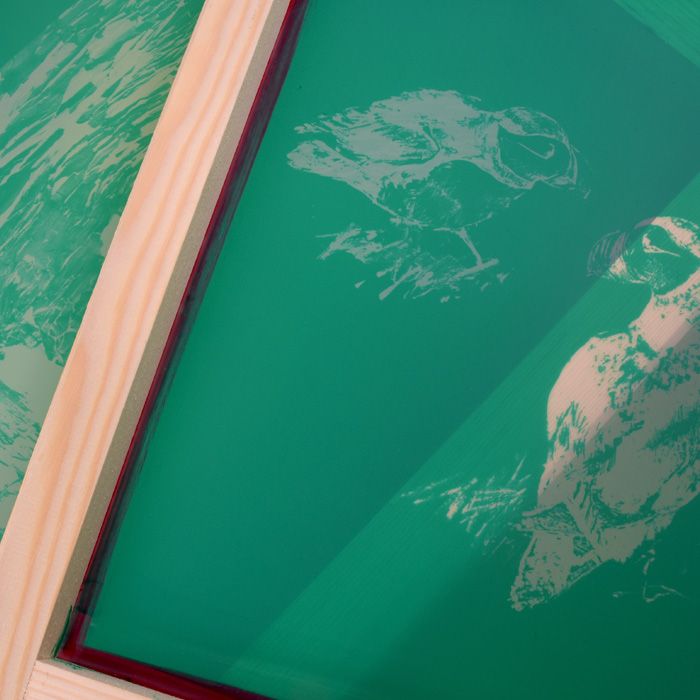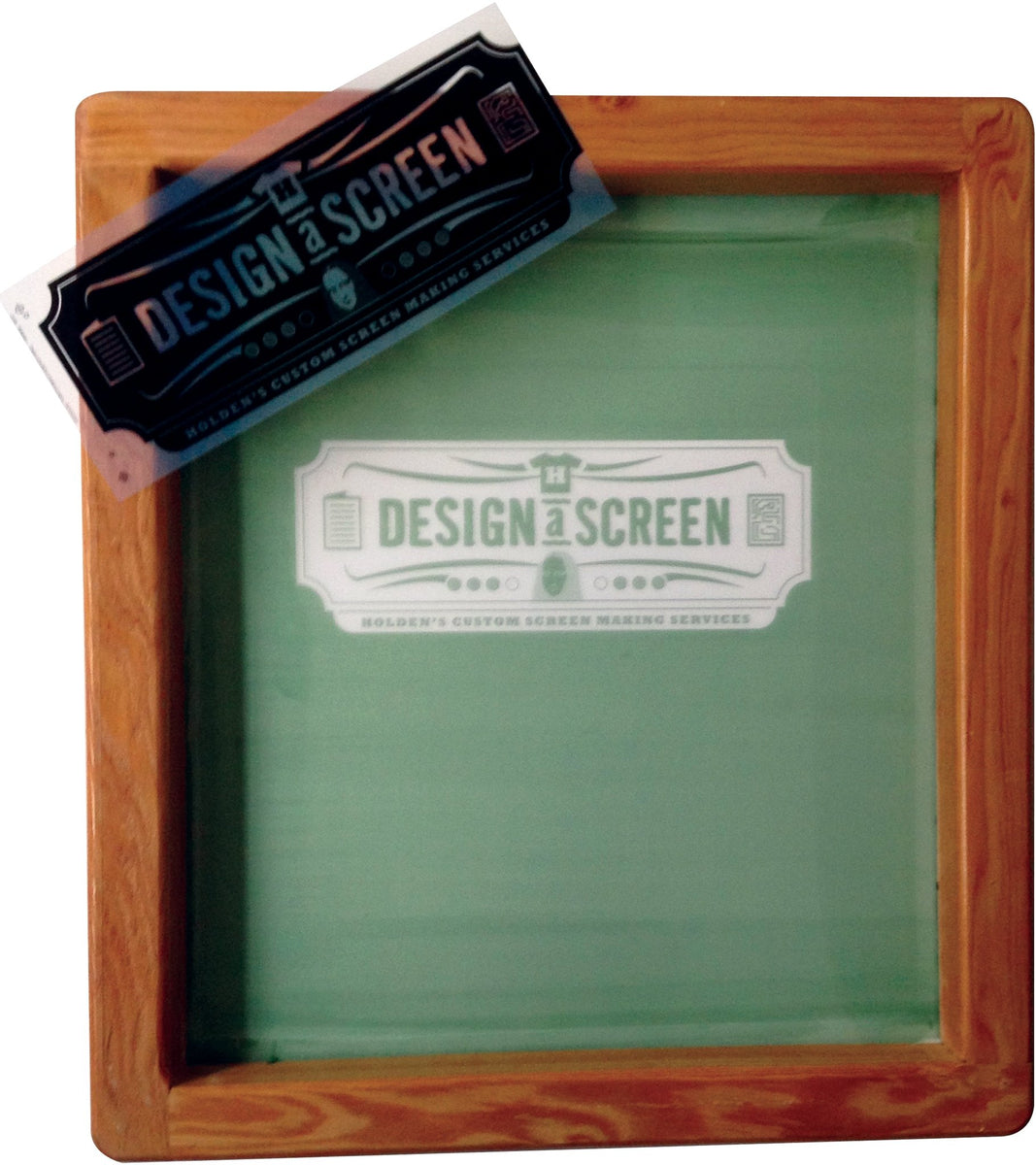Artistic Silk Screen Printing for Limited Edition Prints
Artistic Silk Screen Printing for Limited Edition Prints
Blog Article
Screen Printing Uncovered: Whatever You Need to Learn About Tee Shirt and Garment Printing Strategies
Screen printing is a remarkable approach that integrates art with technique, providing limitless possibilities for creative thinking. Prepared to check out the necessary aspects that make display printing an art form?
The Basics of Screen Printing: How It Functions
When you dive right into display printing, you'll uncover it's both an art and a science. At its core, display printing entails creating a pattern, or display, that allows ink to pass via only in specific locations.
Next, you'll blend your inks and prepare your printing surface area. Position the display over the textile, then make use of a squeegee to push ink with the screen onto the garment. This process calls for precision, as you want clear, dynamic prints. After printing, you'll cure the ink with warmth, guaranteeing it follows the fabric and lasts with cleans. Each action is crucial, and mastering them will certainly elevate your display printing skills, transforming easy garments right into unique, meaningful items.
Sorts Of Screen Printing Techniques
When you understand the essentials of screen printing, it's time to check out the different techniques that can raise your styles. One preferred technique is traditional display printing, where ink is pressed via a stenciled screen. This strategy is terrific for bold, lively colors. There's water-based ink printing, which supplies a softer feel and is environmentally friendly, yet it requires a different strategy to curing.
One more alternative is plastisol printing, recognized for its toughness and brilliant colors, making it a favorite for several brand names. Experiment with halftone printing to develop gradient results and complex layouts.
Necessary Devices for Display Printing
To achieve magnificent lead to display printing, having the appropriate equipment is essential. You'll need a tough display printing frame, which holds the mesh that moves your style onto the garment. Next off, spend in high-quality mops; these are essential for applying ink equally throughout the screen. You'll likewise need a good direct exposure device to produce your screens, along with a washout cubicle for cleaning them after use. A dependable warmth source, like a conveyor dryer or warm press, is critical for curing your prints to guarantee durability. Don't neglect an appropriate work space, geared up with tables and storage for your products. Safety equipment, such as handwear covers and masks, will certainly maintain you secure from chemicals and inks. With the right devices, you'll be well on your way to creating professional-quality prints.
Picking the Right Inks and Materials
When selecting inks and products for screen printing, you need to take into consideration the kind of ink that functions finest for your project. Assume about material compatibility to guarantee your layouts look last and terrific lengthy. Also, explore environmentally friendly ink choices to make your printing procedure more lasting.
Kinds Of Screen Inks
Selecting the ideal screen ink is essential for attaining lively, durable prints that satisfy your task's demands. There are several kinds of display inks to take a look at. Plastisol ink is preferred for its versatility and ease of use, supplying outstanding color opacity on dark materials. Water-based ink, on the various other hand, provides a softer feeling and is environment-friendly, making it optimal for those looking to decrease their environmental impact. Release inks get rid of color from the fabric, resulting in a soft, vintage appearance but require certain handling. Specialty inks, such as metal or glow-in-the-dark, can add distinct impacts to your styles. Review your task requirements and select the ink that lines up finest with your desired end result.

Textile Compatibility Factors To Consider
Recognizing material compatibility is important for accomplishing top notch display prints, specifically given that different materials react uniquely to various inks. Always evaluate your inks on sample material to assure they adhere properly and keep color stability. Furthermore, keep in mind that material weight and appearance can influence the final outcome, so choosing the right ink and product combination is important for your project's success.
Eco-Friendly Ink Options
Green inks are ending up being a preferred choice for screen printers that want to decrease their environmental effect while keeping high quality. When selecting inks, think about water-based inks, which are less damaging and less complicated to cleanse up contrasted to traditional solvents.
Additionally, try to find inks made from renewable energies, such as soy or vegetable-based choices. By selecting the ideal inks go to my site and products, you'll not only produce stunning layouts however additionally add to a more sustainable printing procedure. Make the button, and your prints will certainly mirror your commitment to the environment!
Preparing Your Layout for Display Printing

Submit Layout Requirements
To ensure your design looks vivid and sharp on textile, you'll require to pay attention to submit layout needs for display printing. Begin with vector documents like AI or EPS, as they can be scaled without losing top quality. If you use raster photos, go with high-resolution documents, such as TIFF or PNG, ideally at 300 DPI. Stay clear of using JPEGs, as they can lose clarity when resized. Also, see to it your design has a transparent background to avoid unwanted white sides on your prints. Keep color modes in mind; CMYK is conventional for display printing, so convert your RGB makes appropriately - screen printing kit. By complying with these standards, you'll set your artwork up for an effective print.
Color Splitting Up Strategies
Color separation is an essential step in preparing your design for screen printing, and mastering it can substantially enhance your print quality. You'll require to break your design into specific shades, as each color calls for a separate screen during printing. Begin by identifying all the shades in your layout and produce layers each. You can use software program like Adobe Photoshop or Illustrator to isolate and different colors properly. Be particular to save each layer as a different data, usually in a layout like TIFF or PSD. This accuracy not only assures accurate shade depiction yet additionally enhances the printing process. By paying focus to color splitting up, you'll achieve vivid and professional outcomes in your screen-printed garments.
Resolution and Size
Attaining the very best outcomes in display printing begins with assuring your style has the ideal resolution and dimension. Ideally, your artwork should go to the very least 300 DPI (dots per inch) for sharp, clear prints. If you make use of lower resolution, your end product might look useful source unprofessional and pixelated.
When it concerns size, take into consideration the measurements of your print location. Design your art work to match the last print size, ideally creating it in the real dimensions you'll be publishing. By doing this, you'll avoid any type of unforeseen scaling issues.
Constantly inspect your design in both vector and raster layouts. Vector graphics can be scaled without shedding quality, making them suitable for screen printing. Preparing correctly will guarantee your style looks incredible on every garment!
Step-by-Step Display Printing Refine
Display printing is a vibrant procedure that permits you to create dynamic designs on different surface areas. To obtain started, you'll require a screen, emulsion, and your selected ink.
After rinsing the unexposed emulsion, your screen prepares. Set it up on your printing surface and align your garment below it. Put ink onto the screen and utilize a squeegee to press the ink through the pattern onto the material. Lift the display very carefully and let the print dry. Ultimately, cure the ink using warmth to assure durability. That's it! You have actually efficiently display printed your layout.
Tips for Successful Screen Printing Projects
While you're diving right into your display printing tasks, keep in mind that preparation is vital to success. Begin by gathering all your products-- inks, garments, displays, and squeegees. A clean work space aids stop undesirable errors, so neat up prior to you begin.
Following, validate your art work is high-resolution and appropriately sized for your garment. Test your display for appropriate exposure and tidy it thoroughly to avoid spots. When mixing your inks, follow the maker's guidelines to attain the appropriate consistency.
Throughout printing, use even pressure with your squeegee for consistent outcomes. Do not rush; take your time to validate each print fulfills your standards. After printing, let your garments completely dry totally prior to handling or packaging them.
Last but not least, always keep an example of your work for future referral. This means, you can examine your development and improve your methods gradually. Delighted printing!

Regularly Asked Questions
How much time Does It Take to Set up a Screen Printing Task?
Establishing a screen printing task usually takes about thirty minutes to an hour. You'll prepare the screens, mix inks, and change the press. The moment differs based upon intricacy and experience, so stay organized!
Can I Publish on Various Fabric Types Making Use Of the Exact Same Method?
Yes, you can print on various material kinds using the exact same technique, but you'll need to adjust your settings and inks. Some textiles take in ink differently, so experimenting guarantees the very best results for each and every product.
What Prevail Errors to Stay Clear Of in Display Printing?
When screen printing, avoid common blunders like utilizing the wrong ink, disregarding appropriate exposure times, or skipping pre-press checks. Constantly check your configuration and keep clean screens to assure top quality outcomes each time.
How Can I Appropriately Tidy and Keep My Screen Printing Tools?
To effectively tidy and preserve your display printing devices, you should consistently clean screens with proper solvents, inspect mops for wear, and ensure all tools are kept dust-free and completely dry. Uniformity boosts and avoids pricey repair services performance.
Is Screen Printing Environmentally Friendly Compared to Other Methods?
Screen printing can be more ecologically pleasant than various other approaches, particularly if you utilize eco-conscious products and water-based inks. By selecting lasting products and methods, you minimize try this web-site waste and reduce your influence on the earth.
Display Printing Uncovered: Whatever You Need to Know Regarding Tee and Garment Printing Methods
At its core, screen printing entails creating a pattern, or screen, that enables ink to pass with only in certain areas. Position the screen over the material, then use a squeegee to press ink via the screen onto the garment. One preferred technique is standard screen printing, where ink is pushed through a stenciled display.When picking inks and products for screen printing, you need to take right into account the type of ink that functions best for your job.
Report this page